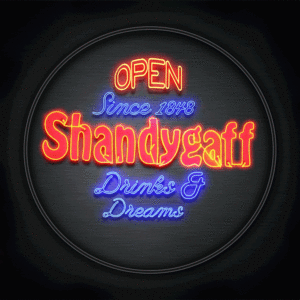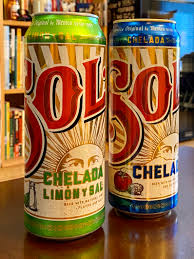![]() by Mark E. Lasbury for Indiana On Tap
by Mark E. Lasbury for Indiana On Tap
About 25 years ago Walter and I were in Nick’s English Hut in Bloomington – we were there a lot back then. I ordered a black and tan, but to my shock and horror this particular server brought me a coke layered over a Bass Ale. I drank it, but it didn’t open a door to a new world for me.
Little did I know then that mixing soda or juice with a beer is a thing; in fact, it’s several things. The explosion of craft beer in the 2000s and 2010s has led to many things that we wouldn’t have considered beer back in the 1990s – slushy beers full of fruit juice, hazy IPAs, double dry-hopped everything. But as unbelievable as it may seem, beers have been cut with juices and other things for centuries.
In our continuing effort to become better informed drinkers, let’s go through four examples of rudimentary “beer cocktails,” some of which have been around for a long time, and some which are growing in popularity right now.

Shandy, from shandygaff – This is the oldest of the named beer cocktails (mid-1800s), although they wouldn’t have called it a beer cocktail then. Charles Dickens wrote in The Adventures of Mr. Verdent Green that one of the characters was taught to make shandy-gaff and enjoyed it thoroughly. In his own words, Dickens called the shandygaff the “perfect alliance of beer and pop.” Even before that, HG Wells wrote in 1853 that a shandygaff was made from two bottles of beer mixed with bottles of ginger beer in a round bottomed jug.
The original shandygaff was a mix of light colored beer and ginger beer or ginger ale. This might even be where the “gaff” came from, a mash up of “ginger” and “half.” Just as likely, it’s a mix of a word meaning boisterous or empty-headed (shandy), and a word meaning outcry or nonsense (gaff), because having too much of it makes you act that way.
In the late 1800s to early 1900s the name was shortened to shandy, while the number of things that were mixed with beer under that name increased, including lemonade, lemon-lime soda, and fruit juice. Nowadays, the term shandy is used almost exclusively, with the notable exception of the Shandygaff Bar in State College, PA, across street from the Penn State College of Nursing.

Shandies now come in two main forms, 1) premixed, ie. made as a beer with lemon-lime flavors or packaged as a mixture, and 2) beers made and then mixed with soda or juice at the bar. Dang near every craft brewery has produced a shandy (4004 by name in Untappd) or a radler (4288 by name in Untappd), the beer cousin to the shandy.
Radler – While people use shandy and radler interchangeably now, their origins were very different, and the definition of each is slightly different. The radler was born after WWI in Germany. The war had taken a toll on the German economy, with gasoline scarce and cars mostly blown up. Because of this, the bicycle was once again king.
Many German citizens started to take bicycle tours again, like they did in the 1890s. They would ride from inn to inn, and do some beer drinking at each stop. The innkeepers made a killing, but the problem was that too many people were doing this and the inns were running out of beer daily. One tavern keeper, Franz Kugler, found a way to stretch his daily beer shipment by diluting it with sparkling lemonade. It was refreshing, it made the parched guests happy, and he sold it for the same price as a whole beer, so it made more money for him – everybody won.
In German, the word for cyclist is “radler,” so Kugler use the term “radlermass” or “cyclist’s liter” for the concoction. These first versions were mostly dark beers mixed with lemonade or lemon soda, but soon the name was shortened to “radler” and shifted to more lagers or white beers mixed with the lemonade. Interestingly, it was technically illegal to sell a mix of beer and anything in Germany until 1993, so up to that point people had to mix their own radlers at the table.

As to the differences between radlers and shandies, there isn’t much. In general, shandies are more diverse, being mixes with juices, ginger beers or ales, as well as lemon-lime soda or lemonade. Radlers, on the other hand, are limited to beers mixed with lemonade or a citrus soda. Some of the most popular radlers are made with grapefruit soda (Schofferhoffer and Steigl).
As a side note, wheat beers mixed with lemonade were/are called Russ’n beers in Germany. In post-WWI Germany, there were many Russian workers that liked the wheat beer/lemon mix rather than lager or light ale mix. This might be where Americans got the idea that they were supposed to add a lemon slice to wheat beers. Germans don’t typically do that, but they used to add a lemon slice to bad wheat beers to cover off flavors.
Chelada and Michelada – The origin of these drinks is a bit murky, but what we do know is that they started in Mexico in the late 1960s, and that from there they have gained favor in the US and have even been marketed by megabeer companies. The story starts with the chelada, supposedly a portmanteau of “chela,” a slang word for beer and “helada,” meaning ice.

You put beer and ice together with some lime juice and salt and you have a chelada. If you add tomato juice and perhaps some clam juice and tabasco, then you have a “michelada,” where the “mi” means ‘my” – ie. my iced beer. There is a separate apocryphal story which has the origin of the product as a Mexican engineer named Michael Esper at his golf club, where he asked for his beer on ice with lime juice, salt, and hot pepper, and the club named the drink for him, a Michael-ada.
Megabeer got into the act when Sol, a large Mexican beer company, started selling Sol Chelada in 2011 (and in the US in 2019). They come in several flavors and sell well in both countries. Budweiser is also very popular in Mexico, and in a recent partnership with Clamato, they now make Bud and Bud Light Clamato Cheladas. Tecante has a version as well.
The michelada flavor has become popular and many craft breweries have started making beers that use this profile. Untitled Art, Bottle Logic, Paradox, Lucky Star (a craft brewery near Dayton that specializes in Mexican beers) – they and more than 200 other breweries have made michelada beers. Rian at Field Brewing in Westfield has made a Michelada Sour, and Black Acre Brewing has also made a michelada beer with clamato. Don’t look for this trend to die off anytime soon.

Colabier – So now we return to my original beer cocktail, served to me without my asking at Nick’s English Hut so long ago. Is it weird to mix cola with beer? I thought it was then, but apparently it’s a thing in Germany now. Many types of beer are mixed with cola there, and people seem to like them (at least some people). Hefeweizen might be the most common style of beer used in this cocktail, called a colaweizen, but any style can be used.
Krombacher produces a packaged colabier called Cab Cola & Beer, and it has become popular enough that all colabiers are often referred to as Cabs; not unlike how all facial tissues are called Kleenex. On the other hand, I only found a handful of colabiers in Untappd, and Cab has a less than stunning score of 2.77, so maybe this is a trend in name only.
Conclusion – Untappd classifies shandies and radlers together as one group. What’s more, colabiers are lumped into the shandy/radler group as well. On the other hand, cheladas and micheladas are usually listed in the spiced beer or fruit beer categories. No matter what you call them, it’s apparent that people are willing to mix just about anything in their beer, and no matter what it is, there’s someone out there who will swear it’s the best thing ever invented.
